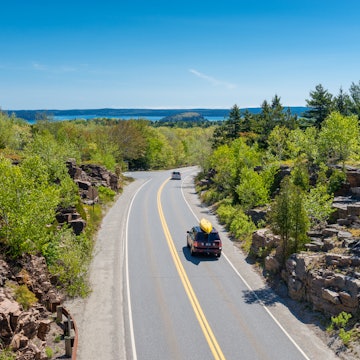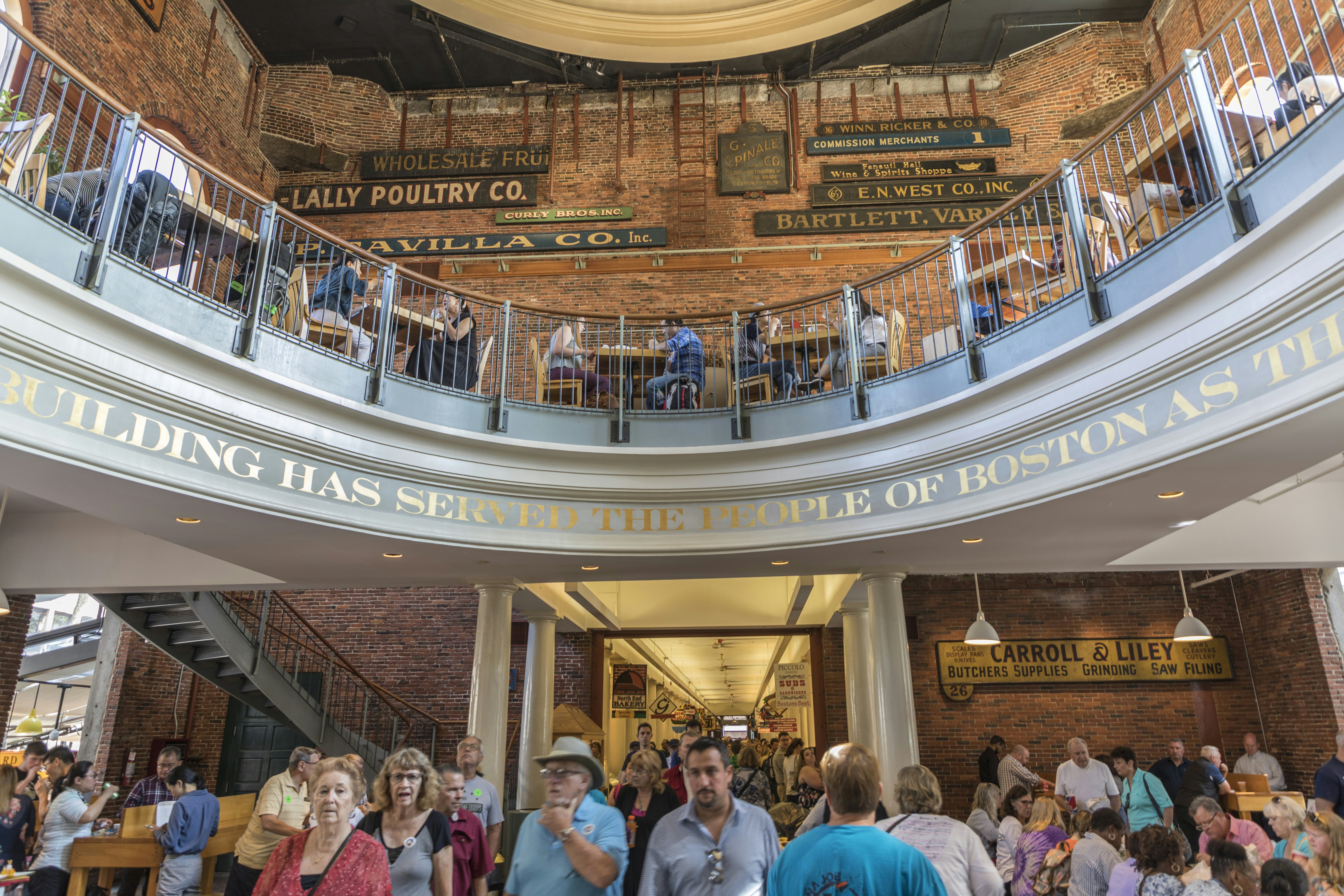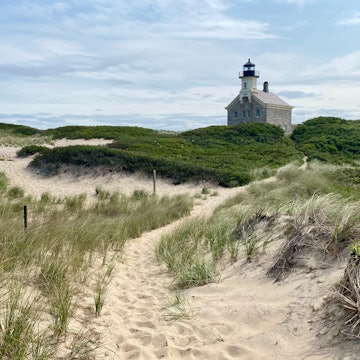

Follow the stages of the Freedom Trail in Boston with our guide. Getty Images
This article was adapted from the Pocket Boston guidebook due to be published in January 2025 and written by Mara Vorhees.
One of Boston’s most popular attractions, the 2.5-mile Freedom Trail comprises 16 colonial and revolutionary historical sites, tracing the locations of the events that earned this town its status as the “Birthplace of the Revolution.”
Whether you prefer to walk the trail at your own pace or join a guided tour, use this guide to summon your inner Paul Revere and follow the redbrick road, from the Boston Common to the Bunker Hill Monument.
First, a breakdown of the trail’s 16 stops
1. Boston Common
The Freedom Trail kicks off at the Boston Common, the country’s oldest public park and a centerpiece of the city. The 50-acre green is crisscrossed with walking paths and dotted with monuments. Don’t miss the memorial to Robert Gould Shaw and the all-Black 54th Regiment, which fought for the Union in the Civil War.
Local tip: The Boston Common is often called ‘the Common’ in local parlance, but never "the Commons." Use the singular or risk ridicule by locals!

2. Massachusetts State House
Overlooking the Boston Common, Massachusetts State House occupies a proud spot atop the city’s last remaining hill – land that was previously part of John Hancock’s cow pasture. Go inside for a free tour of the historic halls and the functioning seat of government.
Detour: National Park Service rangers give free 90-minute guided tours on the Black Heritage Trail, departing from the Robert Gould Shaw Memorial across the street. These tours explore the history of the abolitionist movement and African American settlement on Beacon Hill.
3. Park Street Church
The soaring spire of Park Street Church has been an unmistakable landmark since 1809. The church earned the moniker "Brimstone Corner" both for its usage as a gunpowder storage place during the War of 1812 and for its fiery preaching.

4. Granary Burying Ground
Next to the church, a pair of Egyptian Revival gates open to the Granary Burying Ground. Steeped in history, the serene cemetery is the final resting place of many of the Sons of Liberty – such as Paul Revere, Samuel Adams, John Hancock and James Otis – as well as the victims of the Boston Massacre and other historical figures.
5. King’s Chapel and Burying Ground
At the corner of School St, the Georgian King’s Chapel overlooks its adjacent burying ground, which is the oldest in the city. It is perhaps an odd choice for inclusion on the Freedom Trail since it was founded as an Anglican church in 1688. It does, however, contain a large bell crafted by Paul Revere and the prestigious Governor’s pew, once occupied by George Washington.
Planning tip: Besides the biweekly services, 30–40 minute music recitals are held in King’s Chapel every Tuesday at 12:15pm.

6. Site of the First Public School
In front of Old City Hall on School St, a plaque commemorates the site of the country’s first public school, founded in 1635. Note the statue of Benjamin Franklin, the school’s most famous dropout. Enter the courtyard to discover some of the school’s distinguished alumni and quirky artwork.
7. Old Corner Bookstore
The little brick building on the corner of School and Washington Sts is aptly known as the Old Corner Bookstore. In the mid-19th century, it was the home of Ticknor and Fields, an influential publishing house that helped to shape American literature during this golden age. The building now houses a Chipotle, but the original structure still stands.
8. Old South Meeting House
The Old South Meeting House saw the beginnings of one of the Revolution’s most vociferous protests, the Boston Tea Party. Come off the street and listen to a reenactment of what went down that day.

9. Old State House
Before the Revolution, the seat of the Massachusetts government was the Old State House, a striking redbrick colonial edifice. Inside, you can peruse historic artifacts and listen to firsthand accounts of Revolutionary events. Outside, gaze up at the balcony, where the Declaration of Independence was first read to Bostonians in 1776.
Planning tip: A single ticket gives entry to both the Old State House and the Old South Meeting House.
10. Boston Massacre Site
In front of the Old State House, the cobblestone circle marks the site of the Boston Massacre, the Revolution’s first violent conflict, in 1770. On March 5, an angry crowd of protesters threw snowballs and rocks at the British soldiers, who eventually fired into the crowd, killing five.

11. Faneuil Hall and Quincy Market
Historic Faneuil Hall was Boston’s original market and public meeting place, built in 1740. Pause to admire the bronze statue of Samuel Adams, who sits astride his horse in Dock Sq, and then ascend to the 2nd-floor hall, where Adams was one of the many orators to speak out against British rule.
Planning tip: It might be time for a bathroom break! Stop behind Faneuil Hall into Quincy Market, the country’s oldest and biggest food hall, which also has plenty of restrooms. Snack your way through a few of the food stalls to fuel up for the rest of your walk.

12. Paul Revere House
Cross the Rose Kennedy Greenway and into the North End to charming North Sq, home to Paul Revere for 30 years. Tours of the clapboard house shed light on Revere’s work and family life. Admission is $6 per adult.
13. Old North Church
North on Hanover St, Paul Revere Mall contains a photogenic statue of the patriot himself. The park also provides a lovely view of your next destination, Old North Church. Boston’s oldest house of worship, the 1723 church played a crucial role in Revolutionary events. It was here, on the night of April 18, 1775, that the sexton hung two lanterns from the steeple as a signal that the British would advance on Lexington and Concord via the sea route.
Planning tip: Book an after-hours 45-minute tour of the church’s crypt to hear stories about the over 1100 people buried there and learn about archaeologists’ latest discoveries. Tours are typically on Friday and Saturday nights.
14. Copp’s Hill Burying Ground
The city’s second-oldest cemetery – dating from 1660 – is the final resting place for an estimated 10,000 souls. It is named for William Copp, who originally owned this land. Copp’s Hill Burying Ground contains some of the city’s oldest gravestones and offers grand views across the river to Charlestown.

15. Charlestown Navy Yard and USS Constitution
Across the Charlestown Bridge is the Charlestown Navy Yard, home of the world’s oldest commissioned warship, the USS Constitution. Board the ship for a tour of the upper decks, where you will learn about its exploits in the country’s earliest naval battles. The Navy Yard also contains a WWII destroyer, USS Cassin Young, as well as the excellent USS Constitution Museum.

16. Bunker Hill Monument
Narrow streets wind up to the 220ft granite obelisk that is the Bunker Hill Monument. Peek in the nearby museum to see dioramas and artifacts from the momentous battle and then climb 294 steps to the top of the monument to enjoy the panorama of the city, the harbor and beyond.
Planning tip: From April to June – due to the seasonal influx of school groups – you may need a climbing pass before ascending the Bunker Hill Monument. Passes are available on a first-come, first-serve at the Bunker Hill Museum across the street.
The best guided Freedom Trail tours
If you’d prefer more guidance and storytelling as you walk the Freedom Trail, consider an audio, guided or interactive tour, like one of these.
National Park Service Audio Tour: For a self-guided tour, download the excellent – and free – NPS app.
Freedom Trail Foundation: Guides in period costume lead "A Walk into History" and tours of the North End.
Hub Town Tours: This intensive 2½-hour tour is the only option that covers all 16 Freedom Trail stops.
Boston by Foot: Offers a truncated version of the Freedom Trail, "Boston by Little Feet," specially designed for kids aged six to 12.
Ye Ole Tavern Tours: Combines education and libation at 10 historic sites, plus three historic pubs.
Photo Walks: See the first 11 Freedom Trail sites, with plenty of time to take pictures and get photography tips.
Boston Scavenger Hunt: Fun custom-designed scavenger hunts.
What is the best time of year to walk the Freedom Trail?
The peak period is from April to October. Book tours far in advance, especially on weekends. Crowds may be lighter on weekdays in April and August. Slow times are from November through March. Tours may run only on weekends or not at all.
On Patriots’ Day weekend (before the third Monday in April), there is a special lantern-lighting ceremony at the Old North Church, as well as the official Boston Patriots’ Day Parade. The Freedom Trail Foundation offers seasonal tours, such as spooky after-dark lantern-lit tours in October and festive holiday tours in December.
















